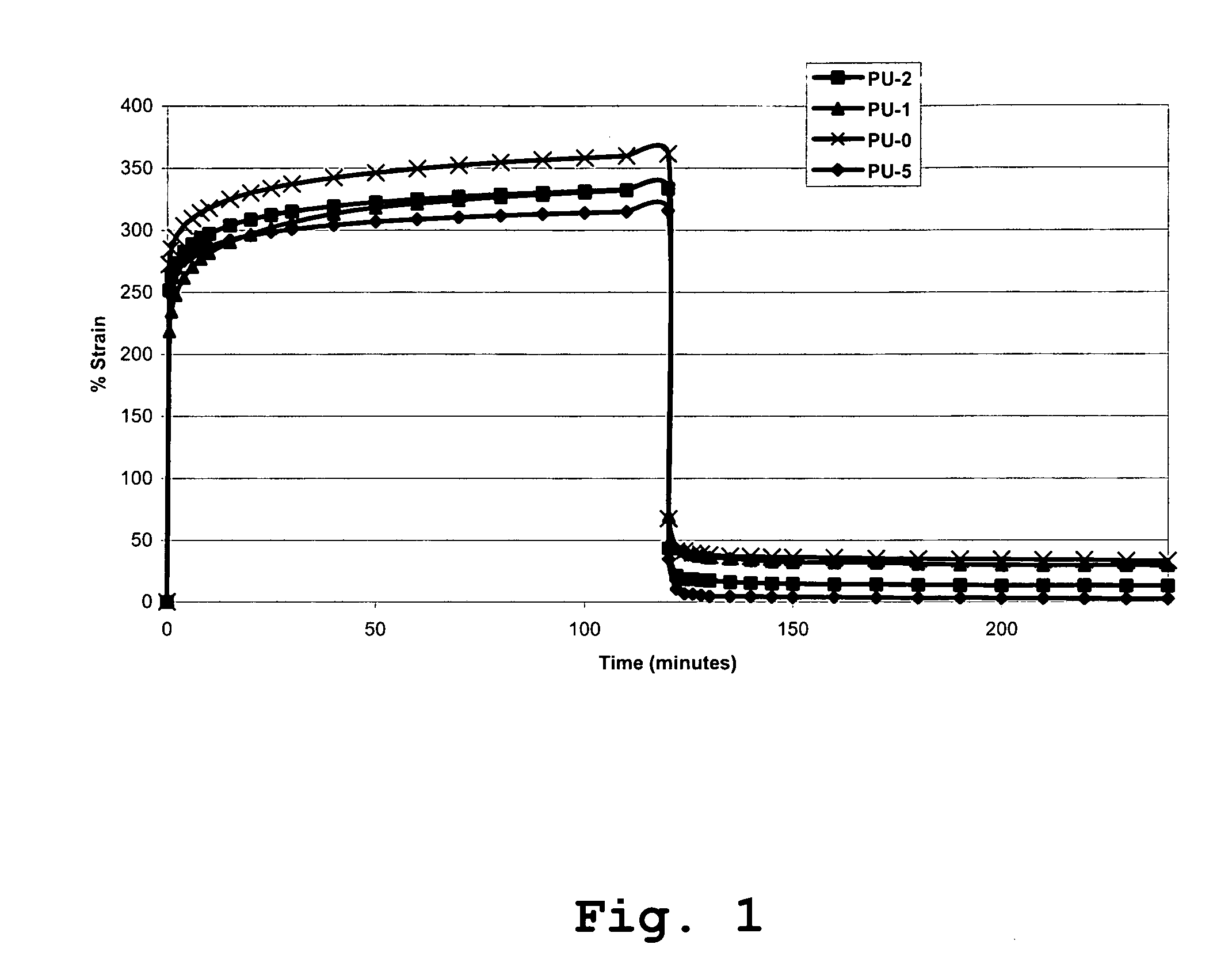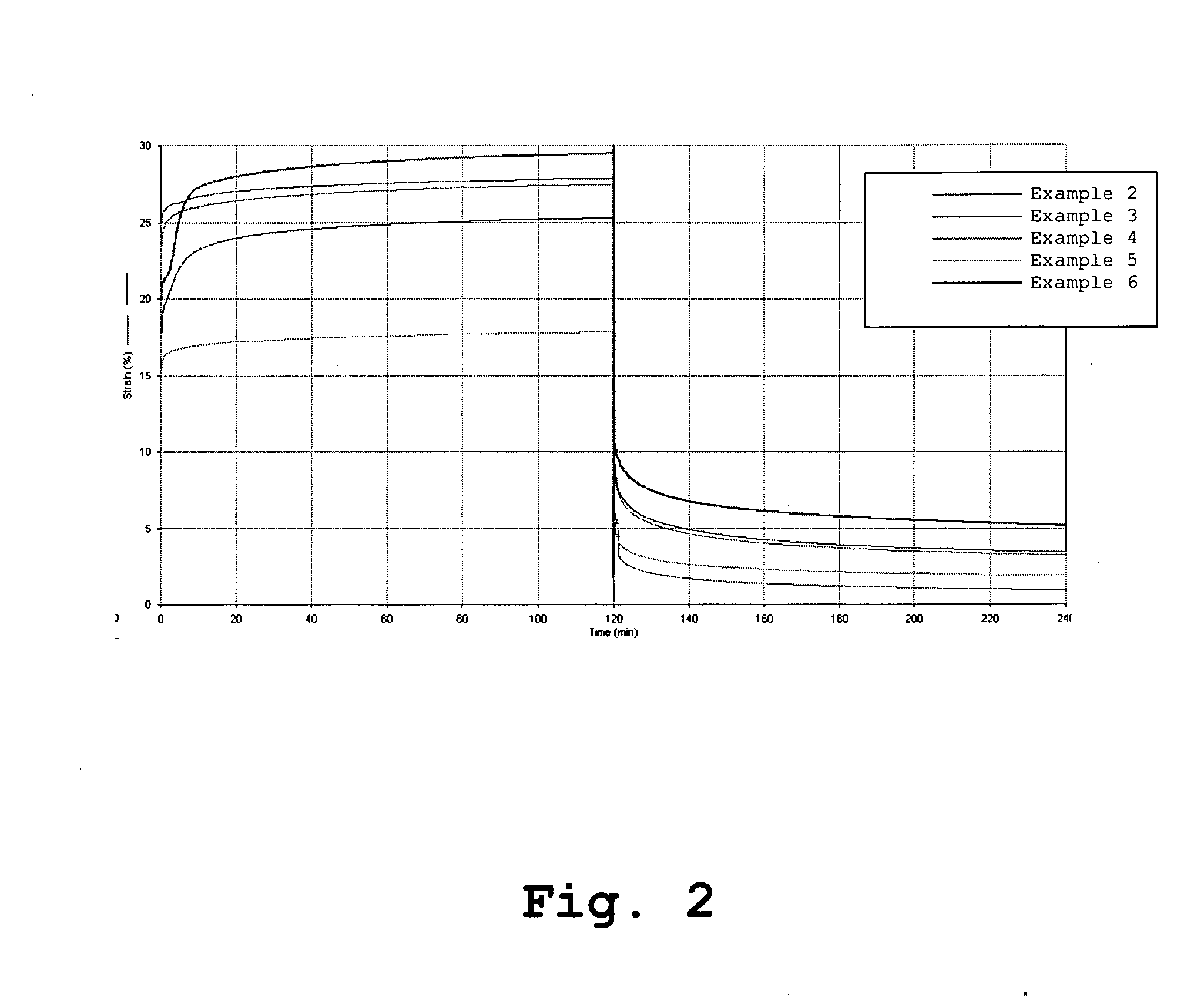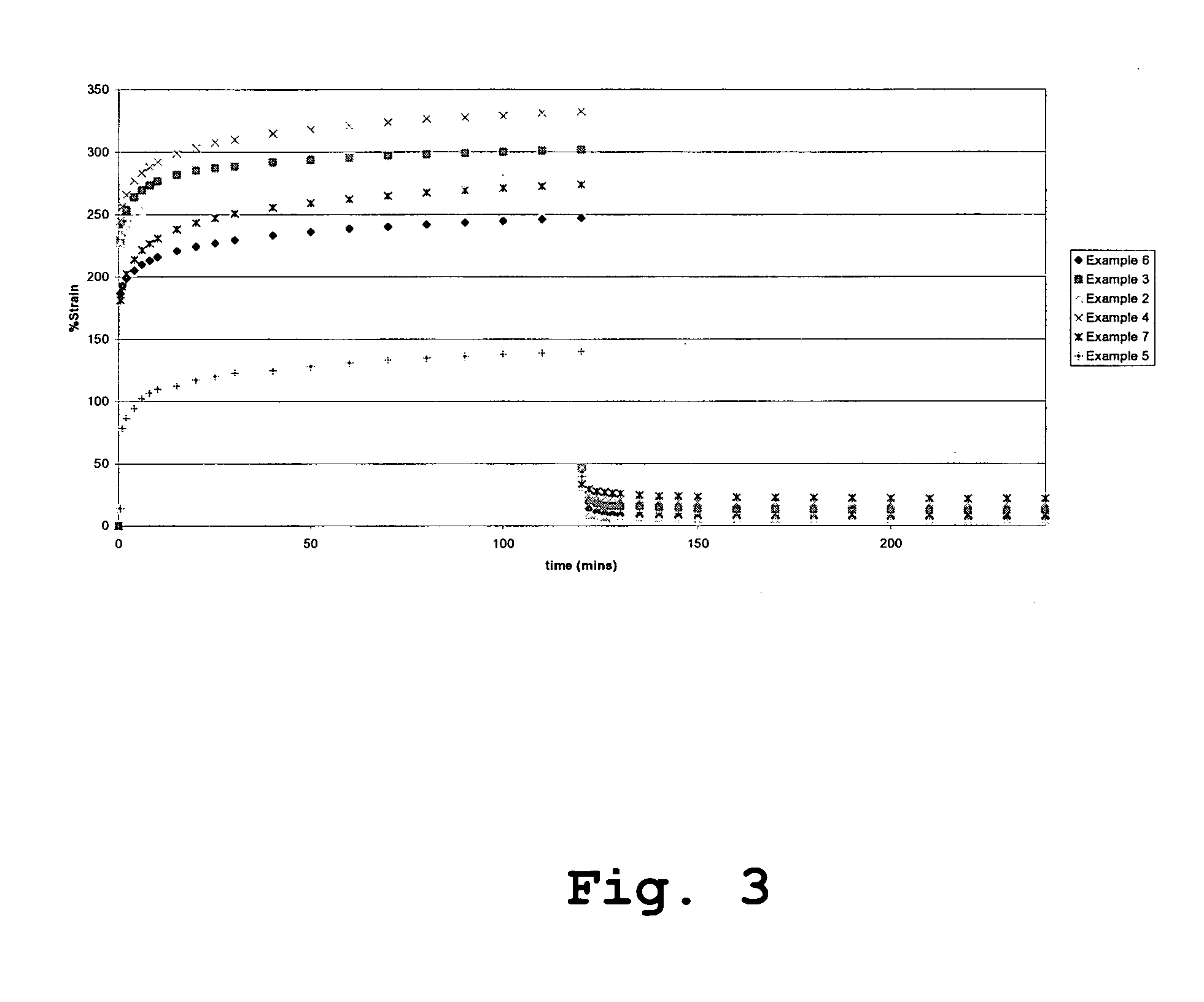Polyurethanes
a polyurethane and polyurethane technology, applied in the field of polyurethanes or polyurethane ureas, can solve the problems of limited use of thermoplastic polyurethanes in load-bearing, and the general deformation of thermoplastic polymers
- Summary
- Abstract
- Description
- Claims
- Application Information
AI Technical Summary
Benefits of technology
Problems solved by technology
Method used
Image
Examples
example 1
[0103] A series of four polyurethanes were prepared to illustrate the effect of incorporating the tri-functional cross linker trimethylol propane (TMP) on creep resistance and mechanical properties.
[0104] Raw Materials: Poly(hexamethylene oxide) (PHMO) was synthesised and purified according to previously reported method (Gunatillake P A, Meijs G F, Chatelier R C, McIntosh and Rizzardo E., Polymer Int. 27, 275 (1992). PHMO was degassed at 135° C. under vacuum (0.01 torr) for 2 h. α,ω-bis(6-hydroxy-ethoxypropyl)-polydimethylsiloxane (PDMS) was purchased from Shin-Etsu (Japan) and degassed at 105° C. under vacuum (0.01 torr) for 4 h. 1,3-Bis(4-hydroxybutyl) 1,1,3,3-tertamethyldisiloxane (BHTD, Silar Laboratories) was degassed at ambient temperature under vacuum (0.01 torr) for several hours (˜12 h). 1,4-butanediol (BDO, Aldrich) was degassed and dried at 105° C. for 2 h prior to use.
[0105] The moisture content of all reagents was determined using Columetric Karl-Fisher titration. The...
example 2
[0140] This example illustrates the preparation of a polyurethane using the tetra-functional cross linker pentaerythritol (PE). The amount of PE used corresponds to 20 mol % of the BDO chain extender resulting in an effective cross link density of 2.653, expressed as mol-% of all components.
[0141] A mixture of PDMS (200.00 g, MW 927.0) and PHMO (50.00 g, MW 710.0) was degassed at 105° C. for 2 h under vacuum (0.01 torr). Molten MDI (102.71 g) was weighed into a three-neck round bottom flask equipped with mechanical stirrer, dropping funnel and nitrogen inlet. The flask was heated in an oil bath at 70° C. The degassed macrodiol mixture (200.0 g) was then added through a dropping funnel over a period of 45 minutes. After the addition is over, the reaction mixture was heated for 2 h with stirring under nitrogen at 80° C. The prepolymer mixture was then degassed at 80° C. under vacuum (0.01 torr) for about 1 h. The vacuum was released slowly under nitrogen atmosphere and 280.0 g of the...
example 3
[0143] This example illustrates the preparation of a polyurethane using the hexa-functional cross linker dipentaerythritol (DPE). The amount of DPE used corresponds to 20 mol % of the BDO chain extender.
[0144] A mixture of PDMS (200.00 g, MW 927.0) and PHMO (50.00 g, MW 710.0) was degassed at 105° C. for 2 h under vacuum (0.01 torr). Molten MDI (102.71 g) was weighed into a three-neck round bottom flask equipped with mechanical stirrer, dropping funnel and nitrogen inlet. The flask was heated in an oil bath at 70° C. The degassed macrodiol mixture (200.0 g) was then added through a dropping funnel over a period of 45 minutes. After the addition was over, the reaction mixture was heated for 2 h with stirring under nitrogen at 80° C. The prepolymer mixture was then degassed at 80° C. under vacuum (0.01 torr) for about 1 h. The vacuum was released slowly under nitrogen atmosphere and 280.0 g of the degassed prepolymer mixture was weighed into a tall dry polypropylene beaker and immedi...
PUM
| Property | Measurement | Unit |
|---|---|---|
| wt % | aaaaa | aaaaa |
| wt % | aaaaa | aaaaa |
| temperatures | aaaaa | aaaaa |
Abstract
Description
Claims
Application Information
 Login to View More
Login to View More - R&D
- Intellectual Property
- Life Sciences
- Materials
- Tech Scout
- Unparalleled Data Quality
- Higher Quality Content
- 60% Fewer Hallucinations
Browse by: Latest US Patents, China's latest patents, Technical Efficacy Thesaurus, Application Domain, Technology Topic, Popular Technical Reports.
© 2025 PatSnap. All rights reserved.Legal|Privacy policy|Modern Slavery Act Transparency Statement|Sitemap|About US| Contact US: help@patsnap.com



